April 21, 2024
Coast-to-coast: San Francisco to Savannah (Part 21)
By Simon J. Lau

Last night we spent the night in Paducah! Established in 1827, it served as a key trading post along the Ohio and Tennessee Rivers. The city played a significant role during the Civil War, serving as a strategic location due to its proximity to the Mississippi River and its railway connections. Following the war, Paducah experienced rapid industrialization, with industries like railroads, tobacco, and textiles driving its economy. In the 20th century, Paducah became known for its contributions to nuclear technology, hosting the Paducah Gaseous Diffusion Plant, which played a crucial role in enriching uranium for nuclear weapons and energy. (Unfortunately, after the plant’s closure, it not only resulted in the loss of thousands of jobs, but also led to years of environmental cleanup.)
In the accompanying image, I photographed a tree in Paducah that struck me as one of the most perfectly balanced trees I’ve seen in years.
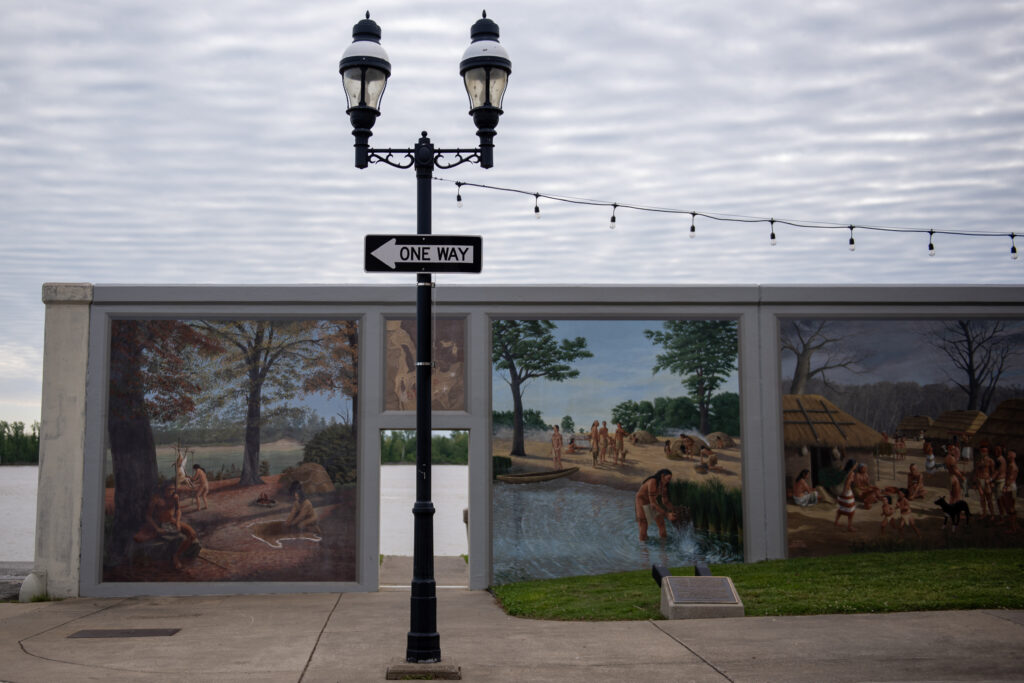
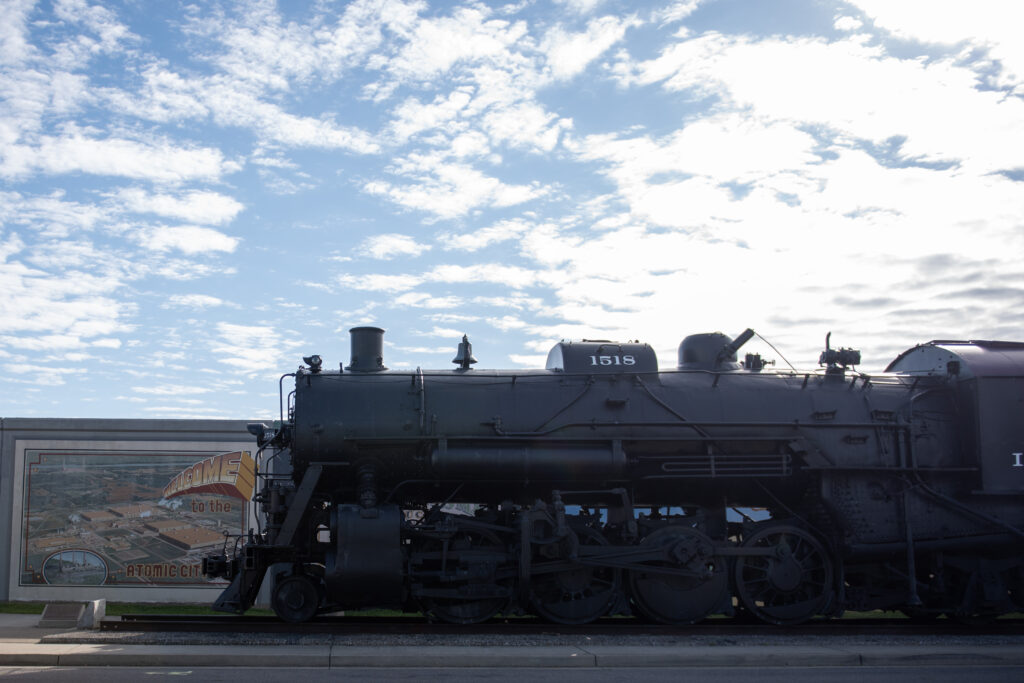
This morning, we visited Paducah’s Riverwalk. This pathway traces the banks of the Ohio River, spanning several miles. It also includes an impressive collection of murals that vividly depict the city’s history. Below are several of my favorite murals.

“This scene shows Broadway, Paducah’s main street, in the 1940’s when the downtown area was the center for the community’s retail, business, and entertainment activities. Such downtown landmarks as the Guthrie Building, 1937 Post Office, Palmer House Hotel, Citizens Bank Building, and Columbia Theater are depicted. Cast-iron storefronts, manufactured by local foundries, remain from the earlier Victorian era when downtown Paducah experienced enormous economic growth and prosperity. (From a 1940’s postcard)”
Sponsored by: David and Sandra Long and Image Graphics, Inc.
Image courtesy of Paducah Wall to Wall and caption from the accompanying plaque.
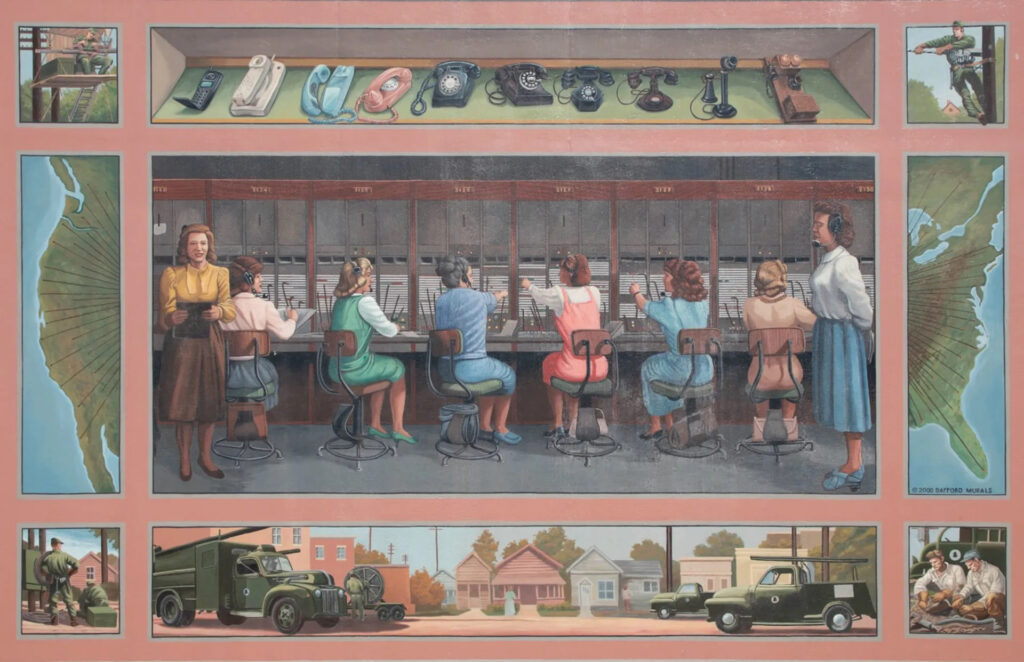
“Through the depression, a struggling telephone industry crept along with advancing technology. In 1940 progress stopped. Most personnel and materials were used to win W.W.II. The local telephone system became outdated. In 1945 the boys came home and the Baby Boom started. Telephones were in demand. Paducah added switchboards and equipment creating one of the world’s best telephone systems. Installing and maintaining two copper wires from the switching office to each telephone in the community, plus adding many long distance trunk circuits to other towns, were unending tasks. Paducah was the hub for switching incoming and outgoing long distance calls for the region 24 hours a day to points worldwide. In 1979 the old cord switchboard was replaced by an electronic computer switching system. The Telephone Pioneers were created in 1927 and did volunteer projects to say, ‘We care about people and Paducah.’ This mural is dedicated to those who build, operate, and use the telephone system.”
Sponsored by: G. C. Carneal, a “Telephone Pioneer” in memory of Lottie Luigs Carneal
Image courtesy of Paducah Wall to Wall and caption from the accompanying plaque.
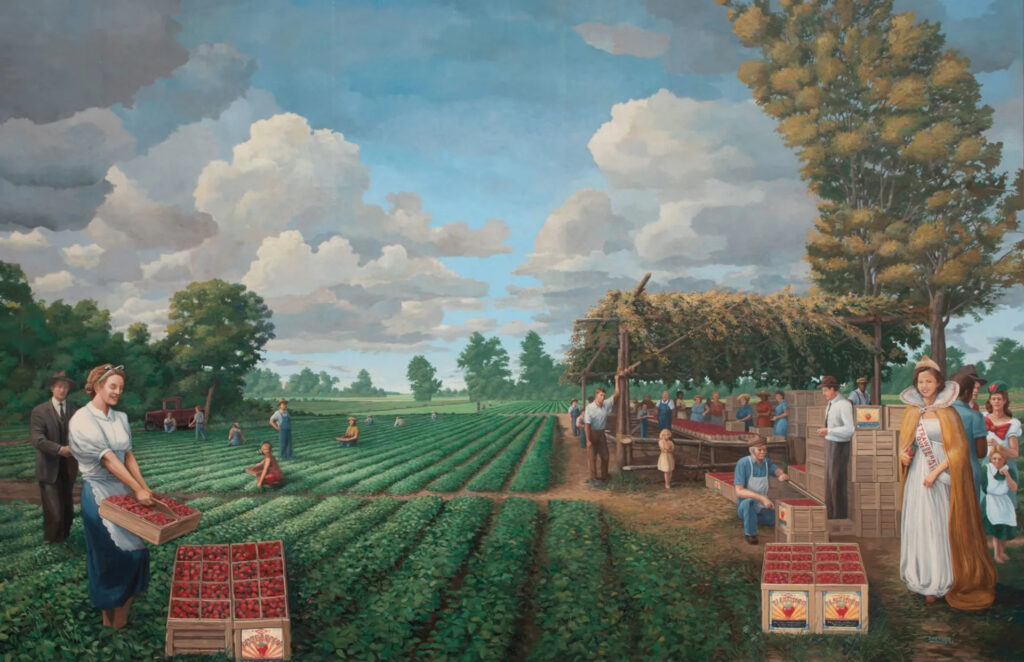
“In the early 1940s, Paducah-McCracken County was known as the strawberry capital of the world. Schools excused students to pick berries. Entire families were involved in this agricultural event. Freight cars carrying thousands of crates of berries were shipped from this region across the country. The climax of the season was the election of a Strawberry Queen and her loyal court. They were featured in a grand parade on Broadway. Because of World War II, the final festival was celebrated in June 1941. (From 1949-1941 photographs)”
Sponsored by: The Paducah Bank
Image courtesy of Paducah Wall to Wall and caption from the accompanying plaque.
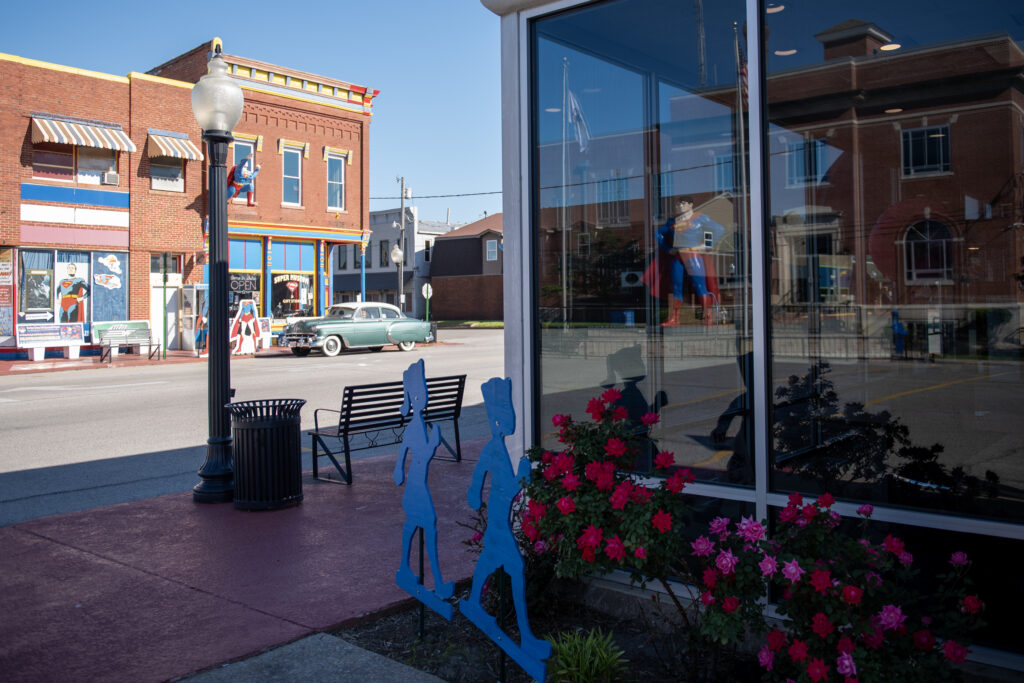
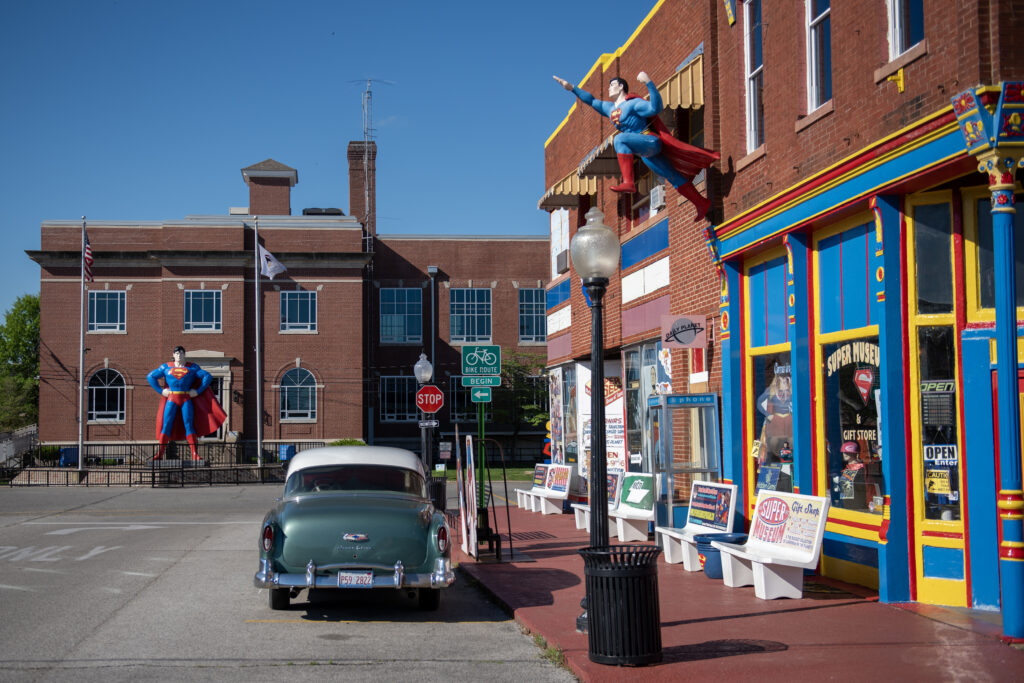
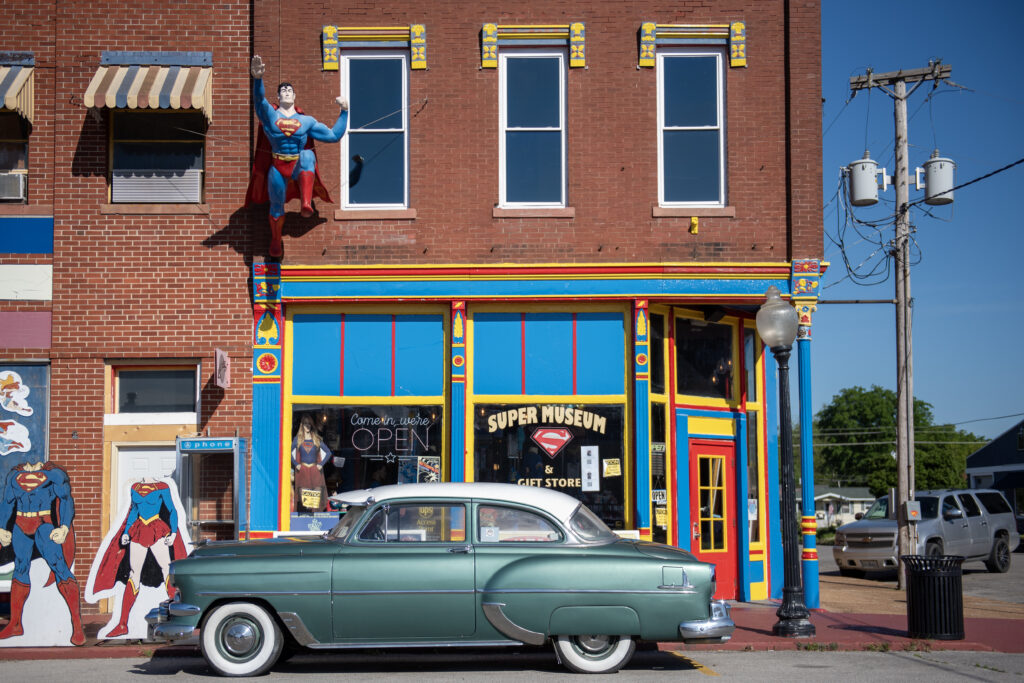
After that, we visited Metropolis, on the other side of the Ohio River in Illinois. In 1972, the city officially declared itself the “Hometown of Superman” to honor the fictional character. It embraced this designation by establishing various Superman-themed attractions and events, such as the annual Superman Celebration, which draws fans from around the country. The city’s strong connection to Superman is further reinforced by the presence of a towering Superman statue, erected in 1993, which has become an iconic symbol of the city. The giant Superman caught my eye when I was checking out what there was to do in Paducah and the surrounding area on Google Maps.
I hate to say this, but I wouldn’t drive across the country to visit the annual Superman Celebration. However, I would drive across the river from Paducah to take photos of the statue. 😅
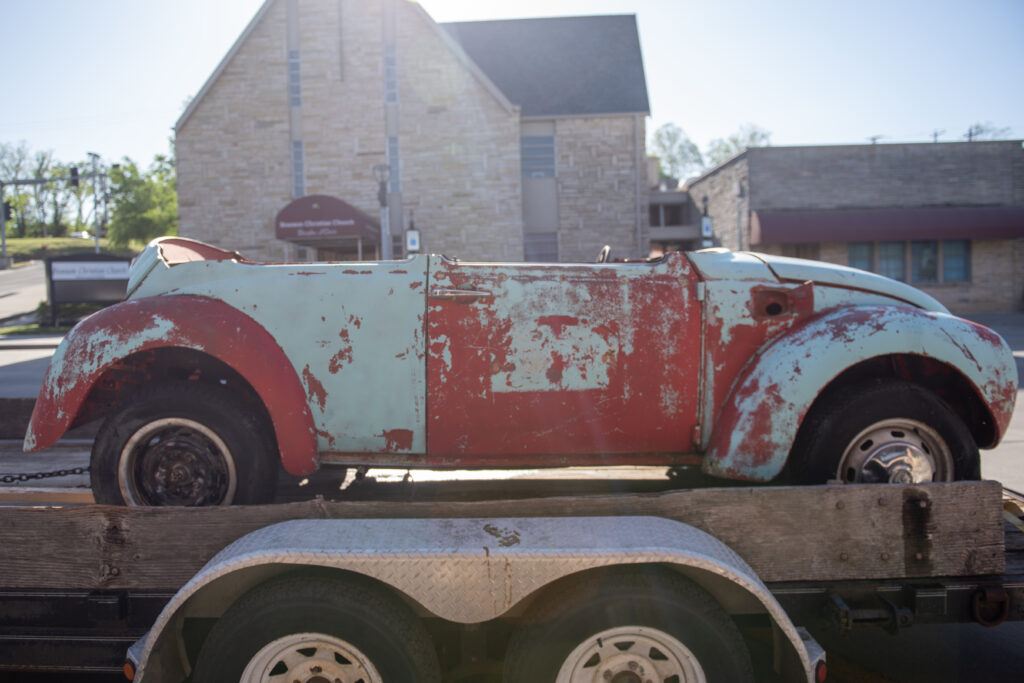
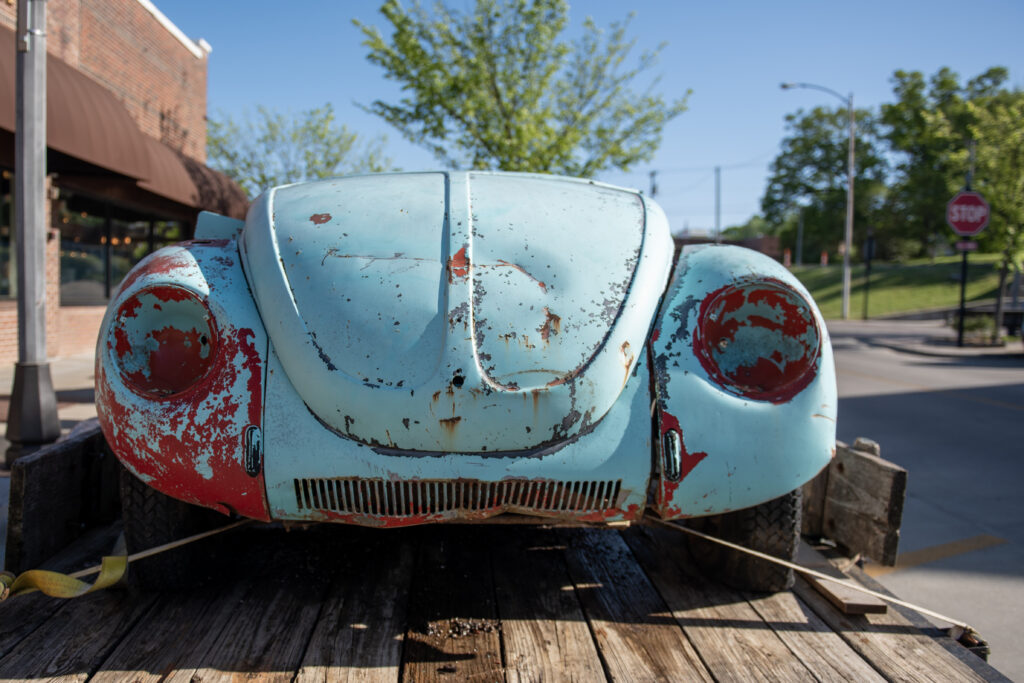
When I went into town today, a couple asked me if I wouldn’t mind moving my car so that they could pull up a huge trailer with a decapitated VW Beetle on it. (I agreed, but before I had a chance to reply, the girl asked me if I spoke English. 🌝 I’ll assume she’s never met an Asian person who speaks English in Missouri, so I’ll forgive her.)
The Beetle was an interesting find. They own a gallery in Historic Branson (in front of where I was initially parked) and planned to place it inside their business. They bought it for $400 from someone who had it outside in their yard as garden art. I was surprised they’d decapitate it, but they said there was no other way to get it into their shop. I think it’ll look neat!
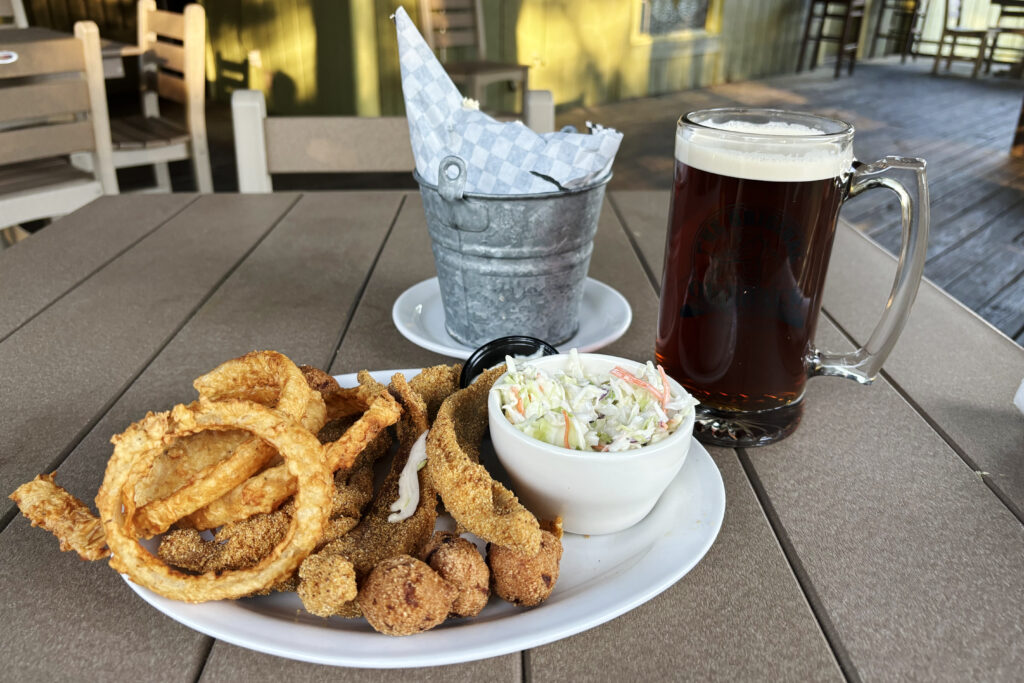
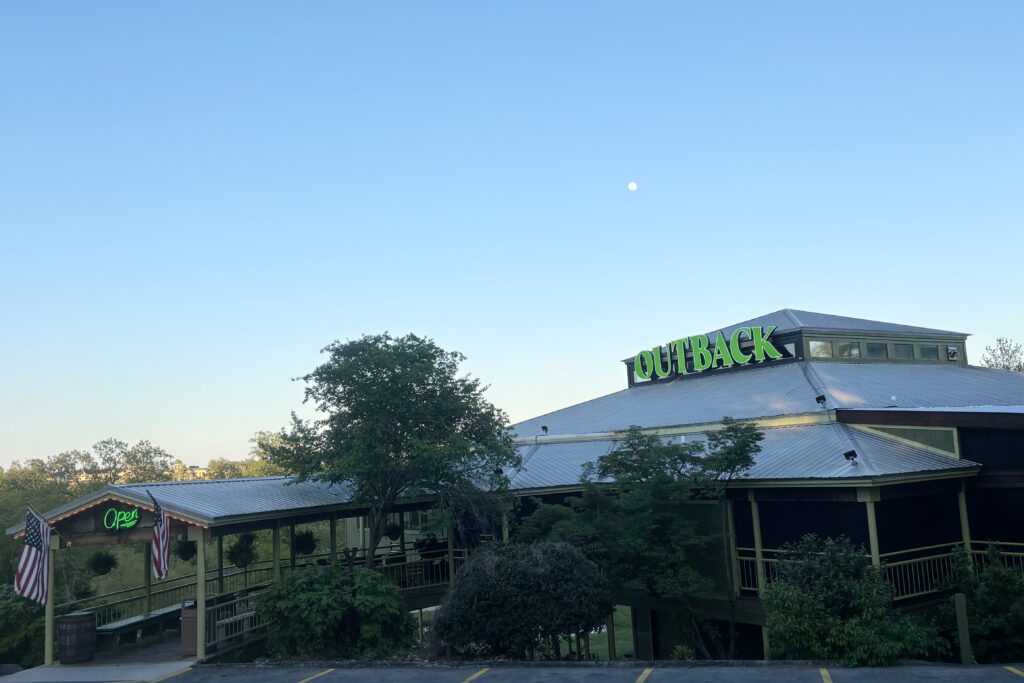
For dinner, I ordered fried catfish. I’ll have to admit, I came here craving gator, but was talked out of it and convinced to get catfish instead. However, this meal was terrible. What’s worse, I only learned after the fact that I shouldn’t be feeding Bruno my onion rings. (Jean let me know that onions can be poisonous to dogs, although that mainly applies to small dogs.) I’ll be keeping a close eye on Bruno tonight, but he seems to be fine so far.
That said, the restaurant was unique! It was mostly built on stilts and backed into a hill. We were also the only ones eating on the patio, so we had a lot of space to ourselves. If only the food were better…

Finally, our route from Paducah and Metropolis to Branson (340 miles or 547 km).

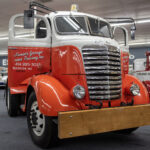
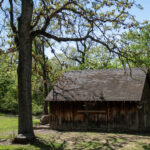

Comments are closed.